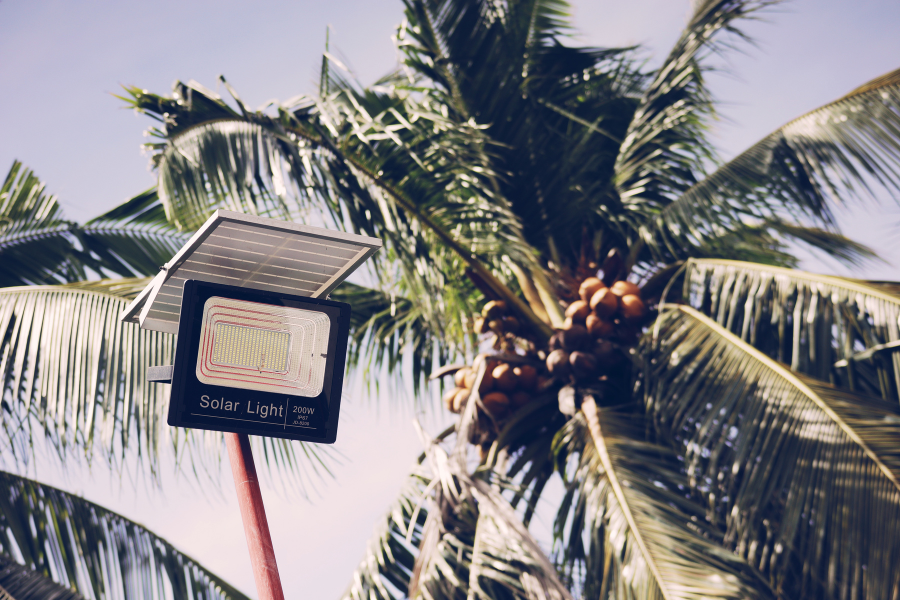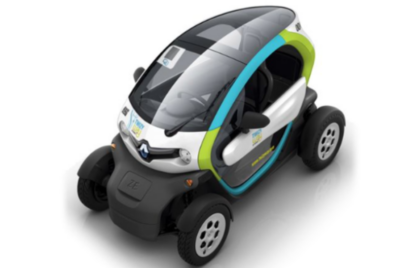Solar Lantern Lights: Illuminate the Night with Solar Power
Solar Lantern Lights: Your Eco-Friendly Illumination Solution
As a staunch advocate for sustainable energy solutions, I often find myself exploring innovative ways to harness the power of the sun. One such solution that has garnered my attention is the remarkable world of solar lantern lights. These unassuming devices not only provide gentle illumination after sunset but also offer a compelling array of benefits that extend beyond their eco-friendly nature.
In this article, I am delighted to be your guide on a journey through the bright and captivating realm of solar lantern lights. We will delve into their advantages, offer insights on selecting the right ones, share practical installation tips, and address common concerns. By the end, you’ll not only appreciate the brilliance of solar lanterns but also feel empowered to make informed choices when integrating them into your life.
The Advantages of Solar Lantern Lights
A Sustainable Lighting Solution
One of the most enchanting aspects of solar lantern lights is their reliance on the sun’s energy. These lights are equipped with solar panels that diligently soak up sunlight during the day, converting it into electricity stored in built-in batteries. When night descends, they gracefully illuminate your surroundings without drawing a single watt from the grid.
Cost-Efficiency
Solar lights are not just environmentally friendly; they can also be incredibly budget-friendly. Their operational costs are virtually zero once you’ve made the initial investment. No electricity bills will ever arrive in your mailbox due to these efficient, sun-powered illuminators.
Easy Installation
Say goodbye to the hassle of complex wiring and electrical installations. Solar lantern lights are designed with user-friendliness in mind. They can be effortlessly set up in a matter of minutes, making them accessible even for those with minimal DIY experience.
Choosing the Right Solar Lantern Lights
Solar lights offer a sustainable and eco-friendly way to illuminate your outdoor spaces, but choosing the right ones involves considering several key factors:
Understanding Lumens
Lumens, a unit of measurement for brightness, play a pivotal role in selecting the ideal solar lights. It’s important to grasp the concept of lumens as it determines the level of illumination your lights will provide. When it comes to outdoor lighting, different areas have distinct brightness requirements. Here’s how to navigate lumens effectively:
• Ambient Garden Lighting: For creating a soft and serene atmosphere in your garden, you may not require an extremely high lumen output. Solar lantern lights with lower lumens can work beautifully in these scenarios, casting a gentle glow that adds a touch of magic to your outdoor space.
• Pathway and Task Lighting: In areas where practicality and safety are paramount, such as pathways, driveways, or task areas, higher lumens are essential. Opt for solar lights with a stronger lumen output to ensure adequate brightness. This ensures that these areas remain well-lit, enhancing visibility and safety during nighttime strolls or activities.
Battery Capacity Matters
The heart of any solar lantern light is its battery. A robust battery ensures that your lights continue to shine through the night, even when faced with challenging conditions. Here’s why battery capacity matters:
• Extended Nighttime Illumination: Solar lights with ample battery capacity have the ability to provide prolonged illumination. They can shine through the night, ensuring your outdoor space remains well-lit even during extended cloudy periods or in regions with shorter daylight hours.
• Dependability: A solar light with a dependable battery won’t leave you in the dark when you need it the most. It ensures that your lights continue to operate reliably, offering peace of mind that your outdoor areas are well-lit.
Durability and Weather Resistance
Solar lights are exposed to the elements day in and day out. To ensure their longevity and consistent performance, consider the durability and weather resistance of the lights:
• Weatherproof Design: Look for solar lantern lights designed to withstand various weather conditions. Whether it’s rain, snow, or intense sunlight, a weatherproof design ensures that your lights remain functional and resilient in the face of changing weather patterns.
• Longevity: Choosing durable materials and construction ensures that your solar lantern lights have a longer lifespan. This means you won’t have to replace them frequently, making them a cost-effective and sustainable lighting solution.
In conclusion, selecting the right solar lantern lights involves thoughtful consideration of lumens, battery capacity, durability, and weather resistance. By understanding these factors, you can make an informed choice that not only brightens your outdoor spaces but also contributes to a greener and more sustainable environment.
Placement and Installation Tips for Solar Lantern Lights
Installing solar lights is not just about setting them up; it’s about maximizing their efficiency and creating a captivating outdoor ambiance. Here are some essential tips for proper placement and installation:
Maximizing Sunlight Exposure
One of the most crucial factors for the effective performance of solar lantern lights is ensuring they receive ample sunlight. Solar lights rely on solar panels to convert sunlight into energy, which is stored in batteries and used for illumination during the night. Here’s how you can make the most of sunlight exposure:
• Strategic Placement: Install your solar lights in areas where they can soak up sunlight throughout the day. This means positioning them in locations that are free from obstructions like tall trees or structures that might cast shadows. A clear line of sight to the sun is vital for efficient charging.
• Adjustable Panels: Some solar lantern lights come with adjustable solar panels. Consider lights with this feature, as it allows you to angle the panels towards the sun’s path, optimizing their exposure and energy absorption.
• Regular Cleaning: Keep the solar panels clean from dirt, dust, and debris. Dirty panels can reduce their ability to capture sunlight effectively. Regularly wipe them with a damp cloth to ensure optimal performance.
Proper Mounting and Positioning
Correctly mounting and positioning your solar lantern lights not only enhances their functionality but also adds to the aesthetic appeal of your outdoor spaces. Here’s what you need to know:
• Mounting Height: The height at which you install your solar lantern lights can significantly impact their light dispersion. For pathway lighting, consider placing them at a lower height to illuminate the ground effectively. For decorative or accent lighting, a slightly higher placement can create captivating lighting effects.
• Spacing: Pay attention to the spacing between each solar lantern light. Proper spacing ensures even illumination and prevents over-concentration of light in one area. The ideal distance between lights depends on their brightness and the desired lighting effect but is typically a few meters apart.
• Accentuating Features: Position your solar lantern lights strategically to highlight specific outdoor features. Illuminate garden paths, highlight flower beds or create a soft glow around outdoor seating areas to accentuate the beauty of your outdoor space.
• Aesthetic Considerations: Solar lantern lights come in various styles and designs. Choose lights that complement your outdoor decor and landscaping to enhance the overall aesthetic appeal of your property.
By following these placement and installation tips, you can make the most of your solar lights, creating a well-lit, energy-efficient, and visually pleasing outdoor environment. Whether you’re looking to improve safety along pathways or create a magical atmosphere in your garden, proper installation ensures that your solar lantern lights perform optimally and enhance the charm of your outdoor space.

Maintenance and Care
Cleaning Solar Panels
Regularly cleaning the solar panels is essential to maintain efficiency. Dust, dirt, and debris can accumulate over time, reducing their ability to harness solar energy.
Battery Maintenance
Taking care of the batteries is equally important. Keep them charged and replace them when they show signs of wear. Healthy batteries translate to longer-lasting illumination.
Solar Lantern Lights for Various Applications
Garden and Landscape Lighting
Enhance the beauty of your garden and landscape with the gentle glow of solar lantern lights. Create a magical ambiance while showcasing your outdoor spaces.
Pathway and Driveway Illumination
Guide your way safely with solar lights lining your pathways and driveways. They not only add charm but also improve visibility during nighttime strolls.
Camping and Outdoor Adventures
Don’t let the nightfall curtail your outdoor adventures. Solar lights are the perfect companions for camping trips, ensuring you have light when you need it the most.
Addressing Common Concerns with Solar Lantern Lights
While solar lantern lights are a convenient and eco-friendly lighting solution, they do come with some common concerns. Here’s how to address these concerns and ensure your solar lights perform optimally:
What to Do on Cloudy Days?
Cloudy days can reduce the amount of sunlight your solar lantern lights receive, but that doesn’t mean they won’t work. Solar lights are designed to store excess energy during sunny periods, allowing them to function even during overcast weather. Here’s what you can do:
• Optimal Placement: Ensure your solar lights are strategically placed in areas that receive the maximum available sunlight. This way, they can charge their batteries to capacity during sunny days, providing backup power for cloudy days.
• Backup Lighting: For areas where consistent lighting is crucial, consider having a backup lighting source, such as traditional electric lights. This can provide illumination on exceptionally cloudy or rainy days when solar lights might not perform at their best.
Extending Battery Life
The longevity of your solar lantern lights’ batteries is essential for their long-term performance. To extend the life of your batteries:
• Full Initial Charge: When you first get your solar lights, it’s essential to charge their batteries fully before use. This helps condition the batteries and ensures they operate at their maximum capacity.
• Avoid Over-Discharging: Over-discharging batteries can significantly reduce their lifespan. Most solar lights have built-in mechanisms to prevent over-discharging, but it’s still a good practice to turn off the lights when not needed to conserve energy.
Replacing Batteries and LEDs
Like any electronic device, the components of solar lantern lights can wear out over time. Fortunately, many solar lights are designed for easy battery and LED replacements, ensuring your lights continue to shine brilliantly. Here’s what you can do:
• Check Manufacturer Instructions: Refer to the manufacturer’s instructions for guidance on replacing batteries and LEDs. They often provide step-by-step procedures specific to your solar light model.
• Quality Replacement Parts: When replacing components, ensure you use high-quality replacement batteries and LEDs compatible with your solar lights. This ensures the continued efficiency and brightness of your lights.
• Regular Maintenance: Periodically inspect your solar lights for signs of wear or reduced performance. By identifying issues early, you can address them promptly and keep your lights in excellent working condition.
By addressing these common concerns and following best practices, you can enjoy the benefits of solar lights for years to come. With proper placement, care, and occasional maintenance, your solar lights will continue to illuminate your outdoor spaces efficiently, even on cloudy days or as components age over time.
Conclusion
In a world that seeks sustainable solutions, solar lights stand as a testament to the power of harnessing sunlight for illumination. Their advantages, coupled with ease of installation and minimal maintenance, make them a shining choice for various applications. Whether you aim to beautify your garden, illuminate pathways, or embark on outdoor adventures, solar lantern lights offer a radiant solution.
As you embark on your journey with solar lantern lights, remember that their brilliance goes beyond the mere illumination of spaces. They represent a greener, more sustainable way of lighting our nights while embracing the boundless energy of the sun.
FAQs
1. How long do solar lantern lights last?
Solar lantern lights can last for several years with proper maintenance. Many models come with warranties that ensure their performance for an extended period.
2. Do solar lantern lights work in winter?
Yes, solar lantern lights can work in winter, albeit with reduced efficiency. They may require longer exposure to sunlight to charge fully during the shorter days of winter.
3. Can I replace the rechargeable batteries?
Yes, most solar lantern lights allow for the replacement of rechargeable batteries. Be sure to use compatible batteries to maintain optimal performance.
4. What should I do if my solar lantern light isn’t turning on?
If your solar lantern light isn’t turning on, check the battery charge and ensure the solar panels are clean and receiving sufficient sunlight. Also, inspect for any loose connections.
5. Are there different types of solar lantern lights?
Yes, there are various types of solar lantern lights available, including garden lights, pathway lights, decorative lanterns, and camping lanterns. Choose the type that best suits your needs and preferences.




